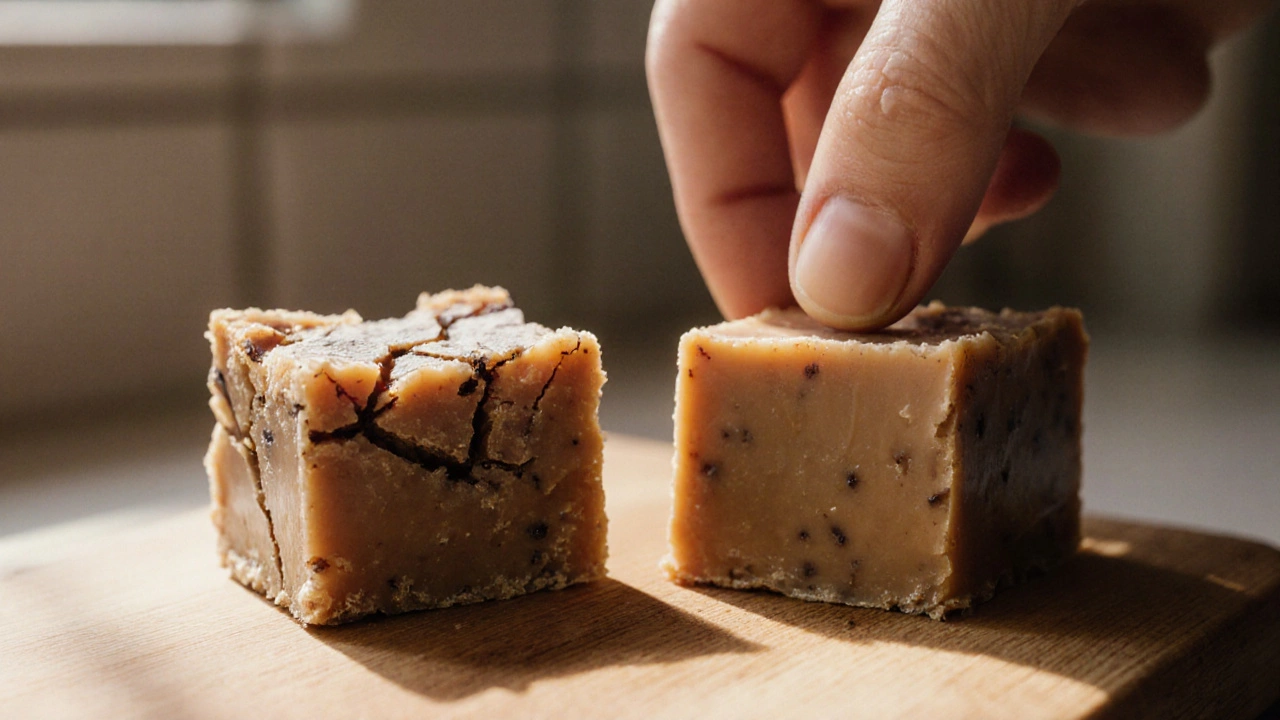How to Keep Fudge Soft and Chewy - Tips to Prevent Hardening
Learn why fudge hardens and discover proven tips-temperature control, ingredient balance, storage methods-to keep your fudge soft, chewy, and perfect for weeks.
When working with fudge hardening, the process of turning warm, glossy fudge into firm, sliceable squares. Also known as fudge setting, it relies on precise temperature control, sugar crystallization, and the right ingredients. A smooth fudge texture, the creamy, dense feel you expect from a good fudge is achieved only when the mixture cools to the proper range and the sugar crystals form uniformly. To keep things on track, many bakers grab a candy thermometer, a heat‑proof probe that reads the exact temperature of the fudge base and watch for the classic “soft‑ball” stage at 112‑114 °C (235‑237 °F). If you’re using condensed milk, a sweet, thick dairy component that adds richness and moisture, the heat‑up time shifts slightly, but the hardening principle stays the same: bring the mixture to the right heat, stir until glossy, then cool without disturbance. In short, fudge hardening encompasses temperature control, requires a candy thermometer, and is influenced by sugar crystallization – those three pillars keep your fudge from staying sticky or turning grainy.
The first factor is temperature range. Hitting the soft‑ball stage tells you the sugar solution is ready to crystalize correctly; going lower means the fudge stays too soft, while overshooting leads to a crumbly, over‑cooked block. Second, stirring technique matters. Once you remove the pan from heat, let the mixture sit undisturbed for a minute, then stir slowly until it thickens; this encourages the formation of tiny sugar crystals that give smooth texture. Third, ingredient ratios such as the proportion of butter, chocolate, and condensed milk dictate how much moisture remains, which directly affects the final firmness. Adding a pinch of salt can also help balance sweetness and improve crystal formation. Lastly, proper cooling environment—a metal or glass bowl set on a cool countertop—helps the fudge lose heat evenly, avoiding a glossy surface that never solidifies.
Understanding these connections means you can troubleshoot any batch that refuses to set. If your fudge stays soft, check that the thermometer read at least 112 °C before you removed the pan; if it’s grainy, you likely stirred too early or let the mixture sit too long before cooling. The next section of articles below walks you through specific fixes for common problems, recipe tweaks for condensed‑milk variations, and how to use kitchen tools to get perfect results every time. Dive in and turn every batch of fudge into a slice‑ready delight.

Learn why fudge hardens and discover proven tips-temperature control, ingredient balance, storage methods-to keep your fudge soft, chewy, and perfect for weeks.